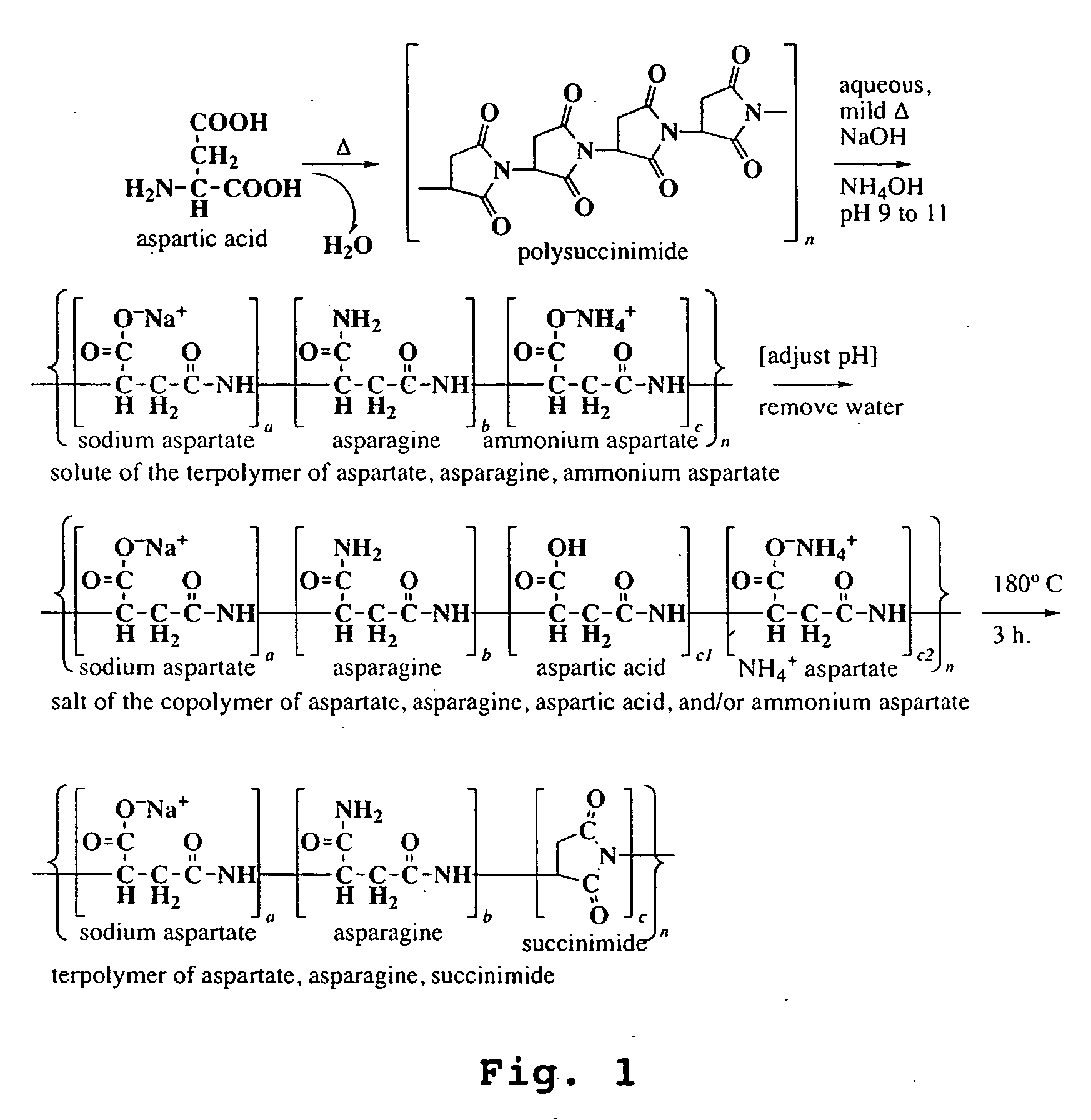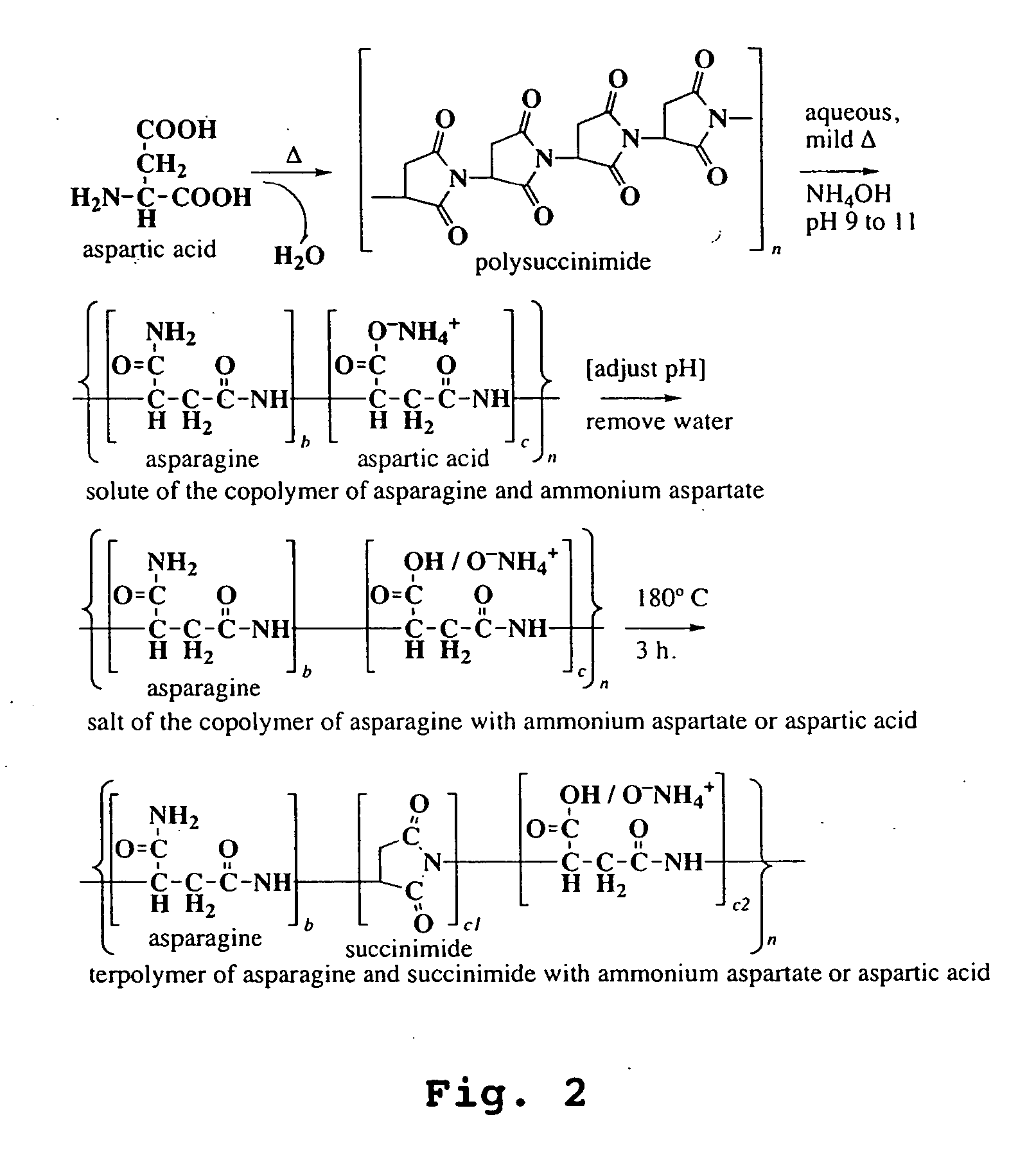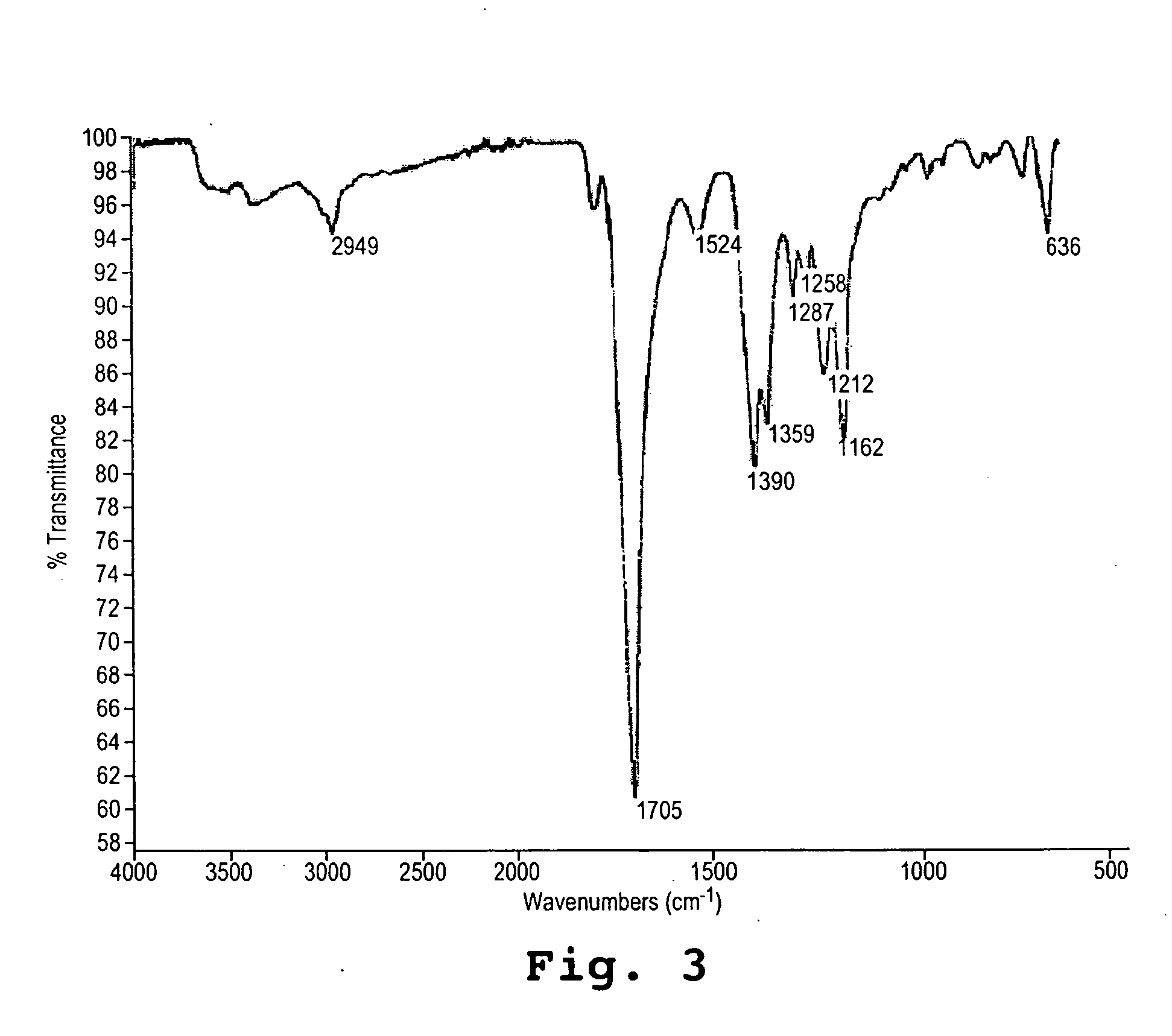Copolymers of amino acids and methods of their production
- Summary
- Abstract
- Description
- Claims
- Application Information
AI Technical Summary
Benefits of technology
Problems solved by technology
Method used
Image
Examples
examples
The following examples are intended to illustrate but in no way limit the invention.
Methods.
Molecular weight. The molecular weights of the copolymers were determined by gel permeation chromatography (GPC), with commercial polyaspartates and polyacrylates as standards. In addition, the molecular weights of specific copolymers were measured by mass spectroscopy (matrix-assisted, laser desorption (MALDI MS) with time-of-flight detector), and then used themselves as standards for GPC determinations.
Color. The color of the copolymers, both as solids and aqueous solutions, was assessed by visual comparison to color standards (ASTM) available from commercial sources. In addition, the ultraviolet and visible light spectra of standard aqueous solutions of the copolymers were compared to indicate the intensity of color development at particular wavelengths.
Molecular morphology. Branching versus linearity of the copolymers was assessed in two ways. The first employed an advanced metho...
examples 1-2
Preparation of Polysuccinimide Starting Materials
example 1
Preparation of a Moderately Branched Polysuccinimide of Approximately 3 to 5 kDa Molecular Weight
An amount of 0.1 mole of aspartic acid (13.3 g) in a 600 ml beaker was thermally polymerized in a vacuum oven at 220° C. for 4 hours. The resulting polysuccinimide, which was obtained in essentially quantitative yield of 9.7 g, had a molecular weight of 3 to 5 thousand Daltons (referred hereafter as 5 kDa) as shown by gel permeation (weight average). It was moderately branched as shown by titration of carboxylate groups, indicating a branch point at roughly 1 in 10 residues. The color of the solid product was light tan. The IR spectrum (FIG. 3) showed a characteristic imide peak at 1705 cm−1 and an amide signal at 1524 cm−1, indicative of ring-opened residues, as would occur at branch points. (2949 w, 1705 s, 1524 w, 1390 m, 1359 m, 1287 w, 1258 w, 1212 m, 1162 m)
PUM
| Property | Measurement | Unit |
|---|---|---|
| Mass | aaaaa | aaaaa |
| Mass | aaaaa | aaaaa |
| Mass | aaaaa | aaaaa |
Abstract
Description
Claims
Application Information
 Login to View More
Login to View More - R&D
- Intellectual Property
- Life Sciences
- Materials
- Tech Scout
- Unparalleled Data Quality
- Higher Quality Content
- 60% Fewer Hallucinations
Browse by: Latest US Patents, China's latest patents, Technical Efficacy Thesaurus, Application Domain, Technology Topic, Popular Technical Reports.
© 2025 PatSnap. All rights reserved.Legal|Privacy policy|Modern Slavery Act Transparency Statement|Sitemap|About US| Contact US: help@patsnap.com



